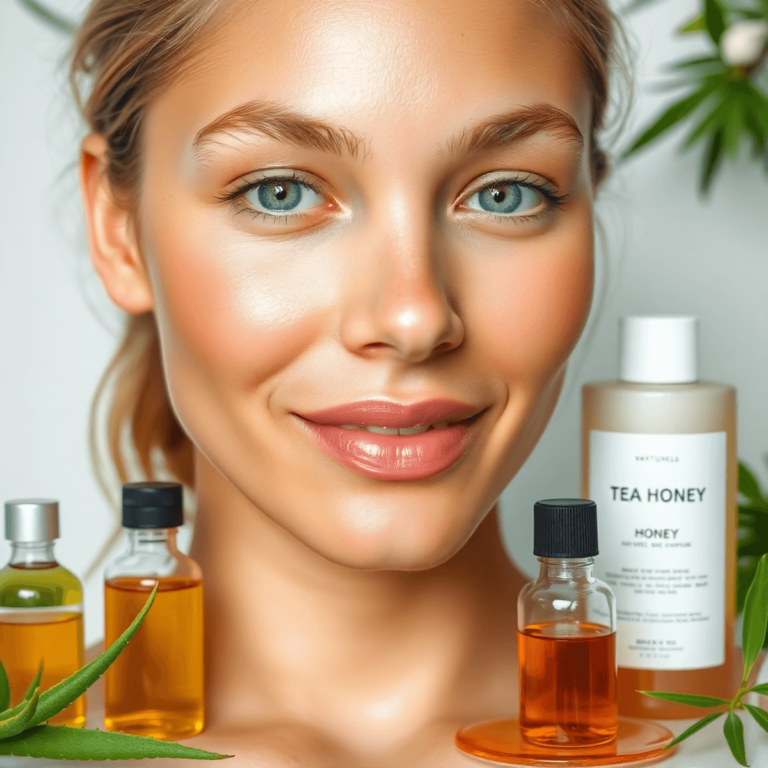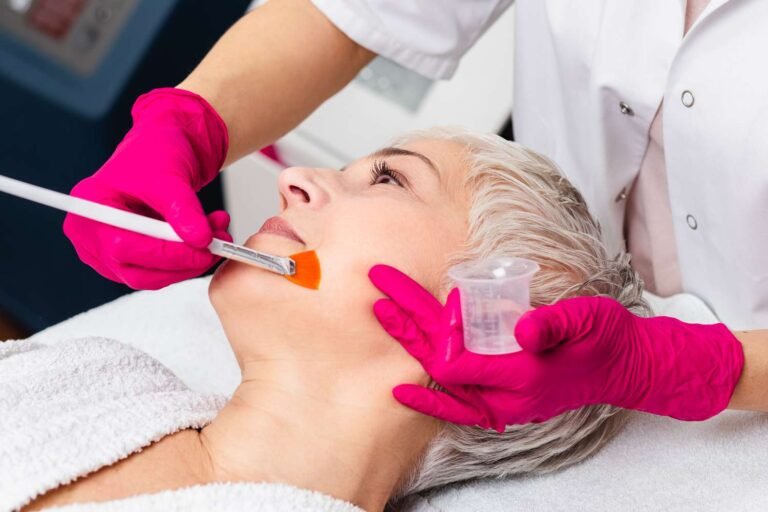What food causes pimples?

Introduction
Acne is a common skin concern that affects millions of individuals, often causing distress and impacting self-esteem. Many people wonder about the role of food in causing pimples. This blog delves into the acne diet connection, exploring how specific dietary choices may contribute to acne development.
Understanding that diet plays a part in skin health can empower you to make informed decisions. While no single food is solely responsible for acne, there are identifiable patterns that suggest certain items may exacerbate skin issues. Factors such as genetics, lifestyle, and hormonal changes also play significant roles in acne formation.
By examining the relationship between what you eat and your skin’s condition, you can take proactive steps towards clearer skin. The following sections will explore various dietary elements linked to acne, providing valuable insights for those seeking to improve their skin health through mindful eating choices.
Understanding Acne
Acne is a common skin condition that affects millions of people worldwide. It can appear in different forms, each with its own characteristics:
- Blackheads: Open comedones that appear as small dark spots on the skin’s surface.
- Whiteheads: Closed comedones that form beneath the skin, resulting in small, flesh-colored bumps.
- Cystic Acne: A more severe form characterized by deep, painful cysts filled with pus.
Understanding what causes acne is important for managing it effectively. There are several factors that contribute to the development of acne:
- Genetics: If your family members have a history of acne, you may be more prone to it as well.
- Lifestyle Choices: Your diet, stress levels, and skincare routines can have a significant impact on your skin health. Eating unhealthy foods may make acne worse.
- Hormonal Changes: Changes in hormone levels, especially during puberty, menstruation, or pregnancy, can lead to increased oil production and clogged pores.
These factors interact in complex ways, leading to inflammation and the formation of acne. By understanding these causes, you can identify potential triggers and make changes to improve your skin health.
The Connection Between Diet and Acne
1. High-Glycemic Foods
Understanding how diet affects the skin requires looking at high-glycemic foods. These foods cause significant changes in blood sugar levels. When you eat these foods, your body experiences rapid increases in glucose, followed by quick drops, often leading to cravings for more sugary or refined foods.
Definition and Examples
High-glycemic foods are those that cause a swift increase in blood sugar. Common examples include:
- Refined grains: White bread, pastries, and many breakfast cereals.
- Sugary snacks: Candy, cookies, and sweetened beverages.
- Processed foods: Certain snack bars and instant noodles.
These items typically contain few nutrients and are often stripped of their natural fiber content, which would normally help regulate blood sugar levels.
Insulin Response
Eating high-glycemic foods triggers an insulin response. Insulin is a hormone that plays a critical role in regulating blood sugar levels. After eating high-glycemic foods:
- Blood Sugar Spike: Your body quickly absorbs sugars into the bloodstream.
- Insulin Overproduction: In response to the spike, your pancreas releases a larger amount of insulin than usual.
- Increased Sebum Production: Elevated insulin levels can lead to increased production of sebum (oil) in your skin glands.
This excess sebum can clog pores, creating an environment where bacteria thrive, ultimately leading to acne formation.
Inflammation Connection
The relationship between high-glycemic foods and inflammation also deserves attention. When insulin levels rise sharply:
- Inflammatory Markers Increase: High insulin levels can stimulate the production of inflammatory substances in the body.
- Skin Conditions Worsen: This systemic inflammation may worsen existing skin conditions such as acne.
Research shows that people who eat a lot of high-glycemic index (GI) foods may have worse acne compared to those who stick to a low-GI diet.
Exploring Alternatives
Changing your diet can be an effective way to manage acne. Think about adding low-glycemic foods into your meals, which provide steady energy without causing big spikes in blood sugar. Some good choices include:
- Whole grains: Brown rice, quinoa, and whole grain bread.
- Fruits and vegetables: Berries, leafy greens, and legumes.
- Healthy fats: Avocados and nuts.
These alternatives not only support balanced blood sugar levels but also offer essential vitamins and antioxidants vital for skin health.
2. Dairy Products
Research has increasingly suggested a potential link between dairy consumption and the risk of developing acne. Several studies have indicated that individuals who consume dairy, particularly skim milk, may experience more frequent and severe acne breakouts.
Key findings from these studies include:
- Hormonal Influence: Dairy products contain hormones such as insulin-like growth factor 1 (IGF-1), which can elevate insulin levels in the body. This insulin response may promote increased sebum production, leading to clogged pores.
- Impact on Inflammation: The consumption of dairy may also influence inflammatory processes within the skin. Elevated insulin levels can trigger inflammation, exacerbating existing skin conditions like acne.
- Skim Milk Effects: Skim milk has been highlighted in particular studies as contributing more significantly to acne compared to whole milk. The removal of fat from milk may concentrate certain bioactive compounds that could affect hormonal balance and skin health.
The connection between dietary impact on skin health and foods affecting acne is evident through these associations. While not every individual will react the same way to dairy, it’s crucial to be aware of how these products might influence your skin condition. As you evaluate your dietary choices, consider the role of dairy and its potential effects on your skin’s well-being.
3. Fast Food Consumption
Fast food consumption has become a significant aspect of modern diets, but its impact on skin health raises concerns. The typical characteristics of fast food diets include:
- High levels of unhealthy fats: These fats can lead to inflammation in the body, which is a crucial contributor to acne flare-ups.
- Refined carbohydrates: Common in fast food items, these carbohydrates have a high glycemic index, causing rapid spikes in blood sugar levels.
Research studies indicate that diets rich in processed foods contribute to an increased risk of developing acne. The consumption of high-glycemic index foods leads to elevated insulin responses, which can enhance sebum production and clog pores. This process promotes the development of acne lesions.
The relationship between fast food and skin health extends beyond immediate dietary choices. A diet high in calories, unhealthy fats, and sugars can disrupt hormone balance, exacerbating existing skin conditions. Hormonal fluctuations are critical in acne development; therefore, maintaining a balanced diet is essential for skin health.
Consider the following implications of fast food on your skin:
- Inflammation: Fast food contributes to systemic inflammation, which can worsen acne.
- Nutrient deficiencies: A reliance on processed foods often results in inadequate intake of essential vitamins and minerals necessary for skin repair and maintenance.
Recognizing the potential risks associated with fast food consumption encourages you to evaluate dietary habits critically. Understanding how these choices affect your skin can empower you to make healthier decisions for better overall skin health.
4. Chocolate’s Role in Acne
Chocolate has long been viewed as a common trigger for acne, with many believing that its consumption leads to pimples. This historical perspective has roots in anecdotal evidence rather than concrete scientific backing. However, modern research has begun to explore the complexities of this relationship.
Recent Findings on Chocolate and Acne
Recent studies indicate that chocolate, particularly milk chocolate, may indeed have an impact on acne severity. Some key points include:
- High-Glycemic Index: Many chocolate products, especially those laden with sugar, fall into the category of high-glycemic foods. These foods can cause rapid spikes in blood sugar and insulin levels.
- Insulin Response: Elevated insulin can lead to increased sebum production and clogged pores, both of which are pivotal in the development of acne.
- Research Findings: A few studies suggest a correlation between chocolate consumption and acne flare-ups. For instance, participants consuming higher amounts of chocolate reported more frequent breakouts compared to those who limited their intake.
The Dairy Factor
In addition to its sugar content, the dairy component in milk chocolate may further complicate matters. As discussed previously, dairy products are linked to increased acne risk due to hormones present within them.
Mindful Consumption
While moderation is key, being mindful of how sweets impact skin health is essential. Understanding that dietary choices can influence skin condition allows you to make informed decisions about what you consume.
5. Whey Protein Supplements
Whey protein is a popular dietary choice among fitness enthusiasts. It is often incorporated into smoothies and shakes for its high protein content. While protein is essential for muscle repair and growth, its impact on skin health warrants attention.
1. Insulin Response
Research indicates that whey protein can stimulate insulin production in the body. Elevated insulin levels may lead to increased sebum production, which contributes to clogged pores—one of the key factors in acne development.
2. Whey Protein Acne Link
Studies have suggested a correlation between whey protein supplementation and the exacerbation of acne symptoms. The presence of insulin-like growth factor 1 (IGF-1) in whey protein further complicates this relationship. IGF-1 has been associated with increased cell proliferation and oil production in sebaceous glands, making it a potential contributor to acne flare-ups.
3. Dietary Impact on Skin
Understanding how specific foods affect acne is crucial for those seeking clearer skin. A diet high in proteins like whey may inadvertently disrupt hormonal balance, leading to inflammatory responses that manifest as breakouts.
To minimize potential negative effects on skin health, individuals considering whey protein supplements should monitor their skin’s response closely. An awareness of how dietary patterns influence overall skin condition can empower you to make informed decisions regarding your nutrition choices. Balancing protein intake with other skin-friendly foods may help mitigate any adverse reactions linked to whey consumption.
6. Food Sensitivities and Inflammation
Certain food intolerances or sensitivities can significantly impact skin health. When the body encounters a food it cannot tolerate, it may trigger systemic inflammation. This inflammatory response can manifest as acne flare-ups, making it essential to understand which foods could be contributing to skin issues.
Common Trigger Foods:
- Gluten-containing grains: For individuals with gluten sensitivity or celiac disease, consuming gluten may lead to inflammation, which can exacerbate acne.
- Dairy products: Many people experience adverse reactions to dairy, especially skim milk, which may contain hormones that influence acne development.
- Processed sugars: These can increase inflammation in the body, leading to an overactive immune response that often results in skin problems.
Research studies have established correlations between specific dietary patterns and an increased risk of developing acne. A diet high in processed foods and sugars tends to produce higher insulin levels. Elevated insulin can lead to increased oil production in the skin, further clogging pores.
The dietary impact on skin cannot be overlooked. Identifying food sensitivities through methods like elimination diets allows you to trace potential triggers and their effects on your skin. Keeping a food journal may help you pinpoint specific foods affecting acne flare-ups.
Understanding these nutritional connections provides insight into managing your diet effectively while addressing skin concerns. Adjusting dietary habits may not only improve overall health but also promote clearer skin by reducing inflammatory responses associated with certain foods.
Adopting a Skin-Friendly Diet: Foods That Promote Healthy Skin
A healthy diet for skin can play a crucial role in maintaining its health and appearance. Incorporating specific foods known for their beneficial properties enhances skin vitality and combats inflammation. Here are key categories of foods that support overall skin health:
1. Fruits Rich in Antioxidants
These fruits help combat oxidative stress, which can lead to skin damage. Notable examples include:
- Berries (blueberries, strawberries, raspberries) are loaded with vitamins C and E.
- Citrus fruits (oranges, lemons) are excellent sources of vitamin C, essential for collagen production.
2. Leafy Greens Packed with Vitamins
Leafy vegetables provide an abundance of nutrients crucial for skin repair and maintenance. Consider including:
- Spinach is high in vitamins A, C, and K, promoting a healthy complexion.
- Kale contains antioxidants and anti-inflammatory compounds that help fight acne.
3. Fatty Fish Providing Omega-3 Fatty Acids
Omega-3 fatty acids are renowned for their anti-inflammatory effects. They can help reduce acne flare-ups and improve skin hydration. Recommended options include:
- Salmon is rich in omega-3s and also provides astaxanthin, a powerful antioxidant.
- Mackerel not only offers omega-3s but also supports overall cardiovascular health.
Incorporating these food groups into your daily meals can create a robust foundation for skin nourishment. The combination of antioxidants from fruits, vitamins from leafy greens, and healthy fats from fish contributes to reducing inflammation while promoting cellular repair.
When focusing on dietary choices, prioritize whole foods over processed options. Embrace the variety available in nature to ensure you receive a comprehensive range of nutrients that benefit your skin. Using these guidelines can set the stage for healthier skin while complementing your overall wellness journey.
Practical Tips for Managing Diet and Acne
Making dietary changes for clear skin involves careful observation and strategic planning. Here are some practical steps to identify problematic foods and incorporate skin-friendly options into your meals.
Identifying Problematic Foods
1. Elimination Diets
- Remove common trigger foods from your diet for a period of 2-4 weeks. Focus on eliminating high-glycemic foods, dairy, fast food, and chocolate.
- After this period, gradually reintroduce each food group one at a time. Monitor how your skin reacts to determine specific triggers.
2. Food Journaling
- Keep a detailed food journal to track what you eat along with any skin changes you notice.
- Include information about stress levels, sleep quality, and menstrual cycles, as these factors can also impact acne.
Incorporating Skin-Friendly Options
1. Experiment with Recipes
- Use fruits and vegetables in smoothies or salads to increase their presence in your diet.
- Try cooking methods like steaming or grilling instead of frying to retain nutrients without added fats.
2. Healthy Snacking
- Swap out processed snacks for healthier alternatives like nuts, seeds, or sliced vegetables with hummus.
- Choose whole grains over refined grains by opting for brown rice or quinoa instead of white rice or pasta.
3. Hydration Matters
- Drink plenty of water throughout the day. This helps maintain skin hydration and supports overall health.
- Herbal teas can also be a great way to increase fluid intake while providing additional antioxidants.
By employing these strategies, you can make meaningful dietary changes that support clearer skin without feeling deprived. Listen to your body and adjust your meals based on personal preferences while focusing on nutrient-rich foods that promote skin health.
Conclusion
Understanding the relationship between food and acne can empower you to make informed choices for better skin health. Here are key takeaways on food-induced pimples:
- Adopt a balanced diet that includes a variety of nutrient-dense foods while minimizing high-glycemic and processed options.
- Monitor your skin’s response to different foods. Individual reactions vary; what triggers acne for one person may not for another.
- Maintain a consistent skincare routine alongside dietary adjustments. This dual approach can enhance your efforts in managing acne.
Incorporating these strategies into your daily life can lead to noticeable improvements in your skin condition. Prioritizing whole foods rich in vitamins and anti-inflammatory properties will support not only your skin but your overall well-being. Embrace this journey towards healthier skin with patience and mindfulness.










